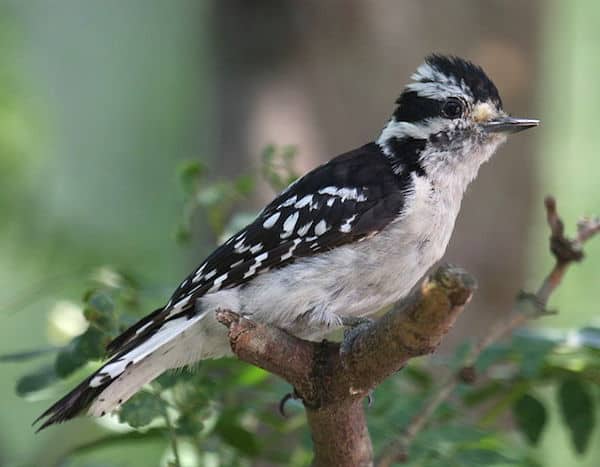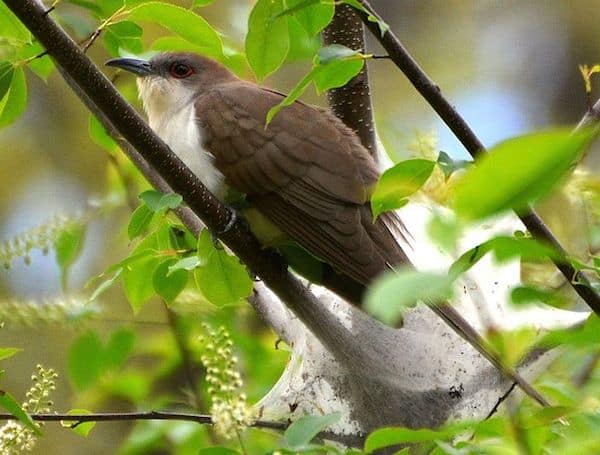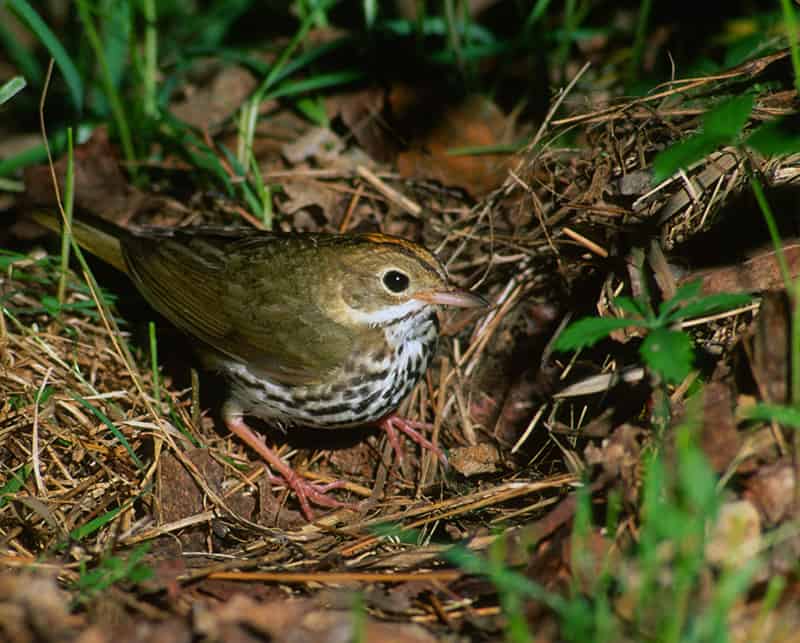The downy is the smallest (6 ¾ inches long), most common, and most widespread woodpecker. Its black-and-white plumage is similar to that of the larger (9 ¼ inches long) hairy woodpecker. In both species, the males have a red patch at the back of the head. Downy woodpeckers have an all-white breast and belly and a white stripe down the middle of the back. The wings and tail are black with spots of white.
Listen for
In all seasons, downy woodpeckers give a rattling whinny that descends in tone. They also utter a sharp pik! call regularly while foraging. Also drums on resonating hollow branches.
Find it
Downy woodpeckers are a favorite of backyard bird watchers because they are often the first woodpeckers to visit bird feeders. Common in any habitat with trees, downies are as equally at home in backyards as they are in remote woods.
A common resident of woodlands throughout North America, the downy is a habitat generalist—found anywhere there are trees or woody plants on which to find food. Though their population appears stable, downies suffer from nest site competition and from the removal of dead trees, which they need for nesting and feeding.
Feed it
Downy woodpeckers use their stiff tails and strong, clawed feet to propel themselves along tree branches or trunks. As they move along, downies probe and chisel at the tree’s bark, searching for insects, insect eggs, ants, and spiders. They also eat fruits, such as sumac and poison ivy. At bird feeders, sunflower seeds
and bits, suet, peanuts, and peanut butter are favorite foods.
Nesting Behavior
Like all woodpeckers, downies are cavity nesters. Each spring they excavate a new nest hole in the dead stub or trunk of a tree—usually one that is already rotting. The nest hole is placed underneath an overhanging branch higher than 12 feet above the ground.
Excavation can take as long as two weeks—even with the male and female participating. Clutch size is usually four to five white eggs, with both sexes incubating. Hatching occurs at 12 days, and both parents feed the young for about three weeks until they fledge.
WOW!
Every fall, male and female Downies each excavate their own roost holes. These are the cozy places where they spend the chilly winter nights.





they are eating at my hummingbird feeders!!
The female Downy Woodpeckers are eating at my hummingbird feeders!! RI…all week!!
One is there now as I write this!!